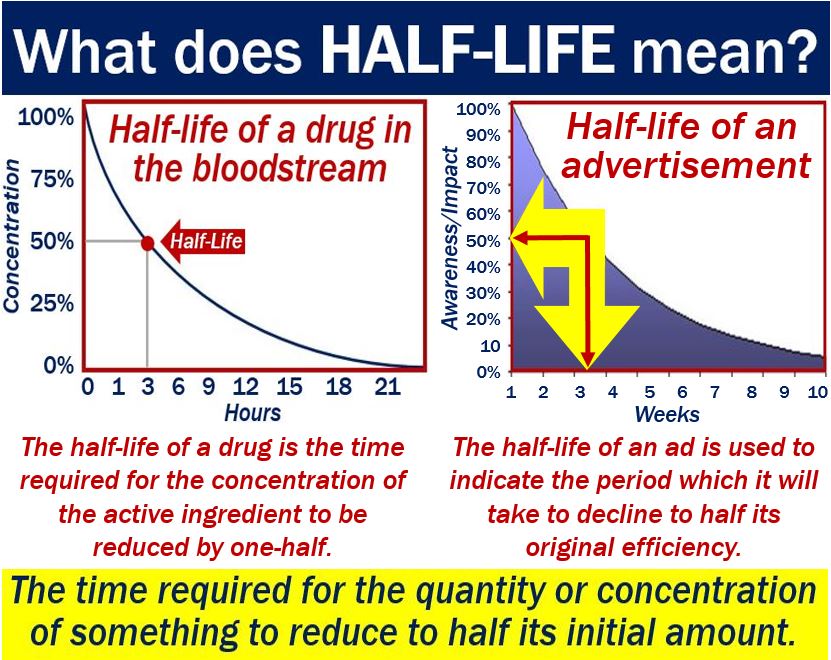Half-life – definition and meaning
A half-life refers to how long it takes for half of a substance or entity to undergo a specific purpose, disintegrate, or disappear. For example, with medications, it is how long it takes for half of its active ingredient to disappear. With a radioactive substance, the term refers to how long it takes for half of its atoms to decay.
A drug’s half-life does not mean the midpoint during its period of efficacy. For example, 50% of the active ingredient may have gone within ten hours, but the drug is effective in the human body for thirty hours.
The half-life of the pesticide DDT is fifteen years. That means that after fifteen years, half of the DDT in the environment has gone. With DDT, during the second 15 years, half of what is remaining will be gone. During the third fifteen years, 50% of what is remaining will again disappear, etc.
Merriam-Webster defines the term as follows:
“1. The time required for half of the atoms of a radioactive substance to become disintegrated.”
“2. The time required for half the amount of a substance in or introduced into a living system or ecosystem to be eliminated or disintegrated by natural processes.”

Half-life in marketing
In direct marketing, the term has a slightly different meaning.
Imagine you send out mailshots to the inhabitants of Chicago. Each household receives a catalog in the post.
A total of 1,000 people subsequently respond with a purchase.
Twenty-one days after the company sent out the mailshot, five hundred people had responded with a purchase. Therefore, the half-life of the catalog campaign was twenty-one days.
In other words, the term refers to the day when half the consumer responses have been received.
For marketing people, knowing when a campaign reaches its half-way point is useful. It is useful because it allows them to adapt more rapidly to consumer demand.
Half-life in finance
A mortgage’s half-life is when the borrower has paid back half the principal. The principal of a loan is the original amount the lender lent to the borrower. A mortgage is a loan in which the borrower’s real estate property serves as security.
In most cases, the half-life date of a mortgage is further in the future than the chronological half-way point of the loan. This is because of the way most lenders set up their loans.
For example, let’s suppose Mary Smith takes out a $100,000 thirty-year mortgage. The interest rate on the loan is 4% per year.
Her monthly repayments, which include some principal and some interest, come to $477.42.
It will take Ms. Smith nineteen years (231 monthly payments) before she has paid off half the principal on her loan.
Video – What does half-life mean?
This GRS Deutschland video animation explains what the term half-life means. The speaker talks about a farmer and a flock of sheep. At first, the whole flock is nervous and agitated.

